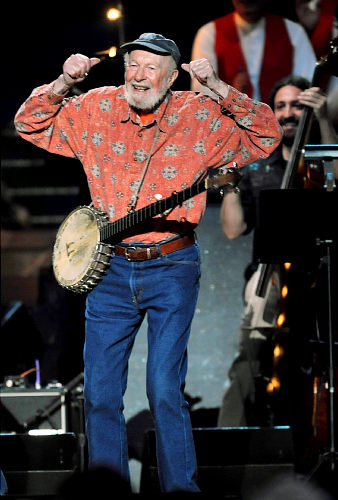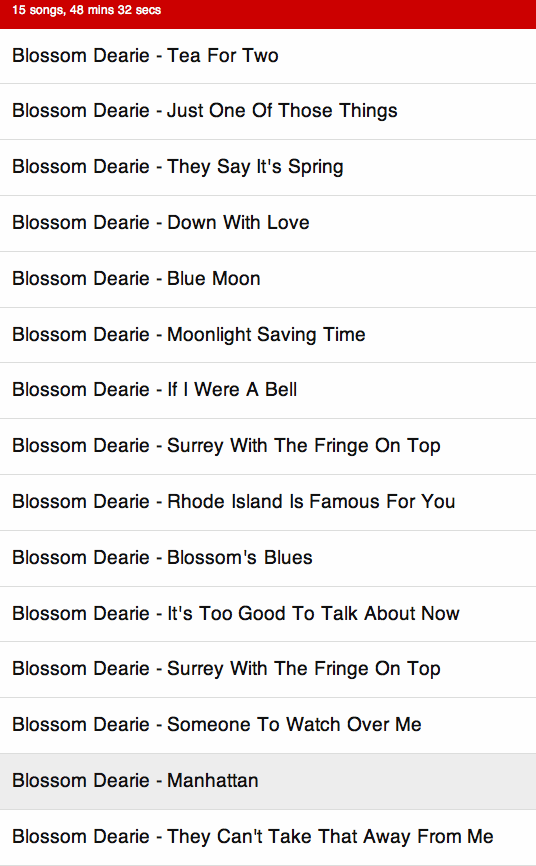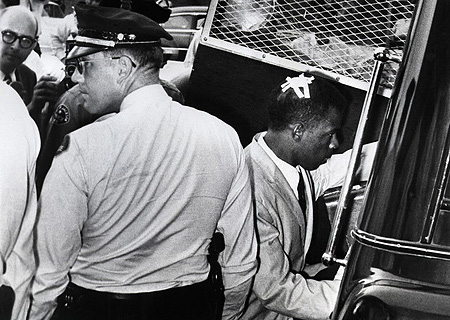By John Dorsey Due, Jr.
November 18, 2008
The nation will pause and reflect on the massive "Revolutionary Kool Aid Suicide" of almost a 1000 Americans in their Jonestown refuge in Guyana and the assassination of Congressman Leo Ryan, thirty years ago, on November 18, 1978. This could be my final ten year acknowledgment of the Peoples Temple and Reverend Jim Jones.
CNN was going to tell this story again last night at 9:00 PM. But the Campbell lead-up at 8:00 p.m. was so boring---re-hashing the all day story of Governor Palin and the Republican Governor's Conference in Miami---that I fell asleep. When I woke up, it was David Letterman time, 11:30, time to enjoy his political jokes. When I turned back to CNN, the news network was showing the horror of the stacked up bodies in a repeat of their 9:00 P.M. special.
But my interest in the Peoples Temple story began before Guyana---in Indianapolis, Indiana---where my connection to the story was made.
In 1998, after watching a version on History Channel, I put it all together in my head. But I better hurry and put my own connection to the story in writing. In 1998, actors connected to me in this story who could have confirmed what I know were living---but they are now gone or about gone. That's the problem when, as a young adult, you hang with people 15-30 years older than you.
When I visited my grandchildren for my birthday, they announced that I am 74 years old. They are such big liars. I exist in a fantasy of denial. ("Grandpaw---I know how old you are" (who asked them?) "74!!")
Sometime in 1958-1959 in Indianapolis, Indiana
Damn! She was fine. Brown skin. Not a high yaller---that I felt tended to be uppity in relation to me with my brown skin. Breasts. A behind. And she was aggressive---coming on to me. She came into the ice cream parlor where I was working part-time. I forget WHY I was working there part time. I got her phone number. But it must have been the short period of time between Indiana University Law School and working at the Indiana State Farm---a correctional facility.
But the opportunity to get it on with this fine woman---either for a one night stand or a relationship---was a diversion from my politics of the moment---and I did not call her.
Yet, in about a week, I saw here again in a drug store near my home---and she came on again---showing disappointment that I did not call her. (As I look at it now, this was strange---because the ice cream parlor was way in East Indianapolis---not near my home neighborhood).
She said I could make up not calling her by picking her up and taking her to church---to a Peoples Temple the coming Sunday. That relieved the sexual tension---because I could then play MY game of seduction by doing a neutral thing---where I would be in control.
Peoples Temple? I had no idea. She said it was integrated. So is the Unitarian church I attended. But I was suspicious when she told me the address---located in the Black Ghetto near downtown---and not in an upper class white suburb as was the Unitarian Church.
My new lady friend---I suspected was not college educated. Therefore, I began to imagine that Peoples Temple was like a Father Divine Church that I had read about---and that sparked my curiosity to see what was going on. While growing up as a child in the AME faith---in Terre Haute, Indiana---there was a piano---but no organ. There was no gospel music. Only Wesleyan hymns. No emotionalism---which was frowned upon. (The women who would forget where they were and get happy, would be rushed by church nurses in white uniforms down into the basement where they could shout and cool down before being allowed to come back up and join the congregation).
But back as a child while growing up in Terre Haute, Indiana, as I walked by Pentecostal churches, people seemed to be having a good time---the falling out---the jumping up and down, the tambourines. Visiting a service with a childhood friend, I enjoyed the testifying and the praising the Lord.
But I had always moved on because all that emotionalism was below my class as was taught in my Black Bourgeoisie upbringing as an AME.
So, I was eager to come by and pick up my new lady friend for church with two motivations---to execute my Sex game under my control and to observe an experience which must be like a Father Divine experience.
The Experience
I came by the house where my new friend lived with her mother and sisters. Only she in the family was going to Peoples Temple. Their house was also in the hood. A typical working class Black family. I was already beginning to lower my expectations of my new friend---because you can be poor---but have a vision of rising---intellectually---not just financially---like having family members striving to go to college if you can't. Yet that did not turn me off like my mother would have liked it to; instead, I was more comfortable that I would not be put down and would be in charge.
Then we arrived at the church building---which was not like a traditional church---but a big warehouse---with a big neon sign that showed it was a church. There must have been more than a thousand people. Looking back now, having had experiences being in big assemblies, I think it could have been 2000 people there---and though my friend and I were not late, we had to sit near the back. Again, not like a traditional church: everyone was sitting on folding chairs. Not pews.
And noise. Not like in a Methodist church or Unitarian church---where in a back row, you can hear a pin drop. My friend did not have to tell me that the young white athletic man on the stage was Reverend Jim Jones. Speakers were set up all over the place; you could hear what he was saying over the noise, the cymbals, the organ and shouts. Everyone was in an uproar, responding to what he was saying.
If you succeeded in shutting your ears to all this noise, to what he was saying---what he said sounded pretty good, until he got to the monsters and the retribution and end of times forecast in the Book of Revelation. This was 1959-60, so the Gantry movie had not yet come out---but just like the Gantry movie---only magnified. Everything was staged---the mass healings and the frenzied exultations---Black and white---about equal.
But it came to me. This guy is a stone hustler. I realized that, somehow, I had been targeted as a mark to be brought to this place to be enrolled in this church because of its enthusiastic integration of Black and white that was not bound to an upper middle class mentality. After the service, there was a great banquet of food and fellowship with the people which was enjoyable, but something was not right. Everyone seemed brainwashed into an alternate reality, and it felt addictive to hang there and get involved there with my new lady friend.
The young lady was fine. But after I took her home---I never called her back. Because I felt I had been a target. I felt as if she knew who I was before she met me---as if this guy Jim Jones had ordered it. I don't want to read into the story what I now know in comparison to what I knew then. But as I recall, I just did not like or trust this Jim Jones---using so-called "integration" to be a white Father Divine. And Black people eating it up.
1960 Indiana Human Rights Commission
When I was selected to be the chairman of the Indianapolis NAACP Political Action Committee in 1958, instead of taking care of my law school classes, I was working demonstrations, picketing and pressing for an Indiana Human Rights Bill on public accommodations and employment. My partners were Willard B. Ransom, general counsel to Madam C. J. Walker beauty industries, and my mentor, Attorney John Preston War, counsel for the Indianapolis NAACP and legal director of the Indiana Civil Liberties Union. State Senator Nelson Grills and State Representative Andrew Jacobs were co-sponsors of the bill. It passed.
Indianapolis, like the rest of the State of Indiana in 1959---was strictly segregated. Poor whites lived in Southern Indianapolis---near the manufacturing centers. Blacks lived in Northern Indianapolis, from central Indianapolis---the Ghetto---near Indiana Avenue, extending north to the suburbs where upper middle class whites lived. Middle class Blacks were slowly moving into these areas near Butler University---the home school of the Disciples of Christ. (I learned in 1998 that the Disciples of Christ had sponsored Jim Jone's Peoples Temple---but later kicked him out---which was the reason he moved to California before moving to Guyanna.)
But after our human rights bill passed, Ransom, Ward and myself lost control or influence as to how the Indiana Human Rights Law would be structured and implemented. My alienation with Indiana then began to develop when the moderates chose Reverend Jim Jones to be a member of the Indiana Human Rights Commission. Even my friends did not understand why I was so adamantly against this so-called progressive integrationist, Jim Jones. He was one of the factors, along with my friends supporting him, for my deciding to come to Florida and the FAMU Law School in order to be part of the Southern Movement bursting in 1960.
So, in 1978, when the news of the Jonestown suicide was told to the world, and they noted that this Reverend Jim Jones, from Indianapolis, was the cult leader directing the so-called mass "revolutionary suicide" I was not surprised.
As if I had a premonition.
My friend John Due has sent to me his remembrance of Peoples Temple and Reverend Jim Jones as a guest post for Hungry Blues. John is now a retired civil rights-community organizer lawyer living in Gadsden County, FL. John and I met on the internet and have a mutual interest in the movement in Mississippi---where he worked during the 1964 Freedom Summer and where I currently investigate racial violence from that time. But before Due moved to Florida in 1960, he was an activist in Indiana. He sent this post to express how he felt how he was a mark for Peoples Temple and Reverend Jones and how we all must take care in any movement. ---BG














Recent Comments